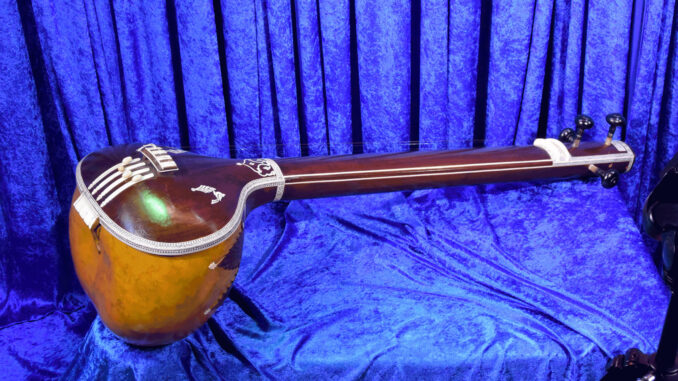
In the captivating world of Indian classical music, the sound of the tanpura (तंबूरा) or tambura plays a vital role. This stringed instrument, known for its sustained drone, provides a harmonic foundation upon which melodies soar. But are “tanpura” and “tambura” simply different spellings of the same instrument, or is there a deeper distinction? Let’s delve into the fascinating world of these drone masters.

Tanpura vs Tambura: A Tale of Two Drones
Origins and Etymology:
Both “tanpura” and “tambura” stem from the Sanskrit word “tambūrā” (तंबूरा), which translates to a stringed instrument. This suggests a common ancestor, likely a long-necked lute from Central Asia. The terms “tanpura” and “tambura” might have emerged due to regional variations in pronunciation or spelling conventions.
Geographical Preferences:
The use of “tanpura” and “tambura” often reflects geographical differences within the Indian subcontinent.
- Hindustani Music (North India): Musicians in North India, associated with the Hindustani music tradition, predominantly use the term “tanpura.”
- Carnatic Music (South India): In South India, where the Carnatic music tradition reigns, the term “tambura” is more commonly used.
Physical Characteristics:
While both instruments share a similar basic structure, some subtle variations might exist.
- Body Material: In North India, tanpuras are traditionally crafted with a gourd (dried pumpkin) as the resonator body. In the South, jackwood might be used for the tambura’s body, although gourds are also not uncommon.
- Size: Tanpuras tend to be slightly larger than tamburas, with a height ranging from 40 to 60 inches. Tamburas typically fall within the 30 to 50-inch range.
Playing Techniques:
Both instruments are played in a similar manner. The musician plucks the strings with their thumb or forefinger, creating a continuous drone that complements the main melody. However, the tuning variations might differ slightly between Hindustani and Carnatic traditions.
The Essence of the Drone:
Regardless of their names or slight physical variations, both tanpuras and tamburas serve the same essential purpose. They provide a bed of sound, a harmonic foundation upon which the melody unfolds. This drone acts as a reference point for the musician, helping them maintain pitch and allowing intricate melodic improvisations to blossom.
Conclusion:
While “tanpura” and “tambura” might have regional and potentially subtle physical variations, they are essentially the same instrument. Both play a crucial role in Indian classical music, creating the foundation upon which melodies dance. So, whether you hear it called a “tanpura” in the North or a “tambura” in the South, appreciate the beauty and depth that this seemingly simple instrument brings to the rich tapestry of Indian music.
